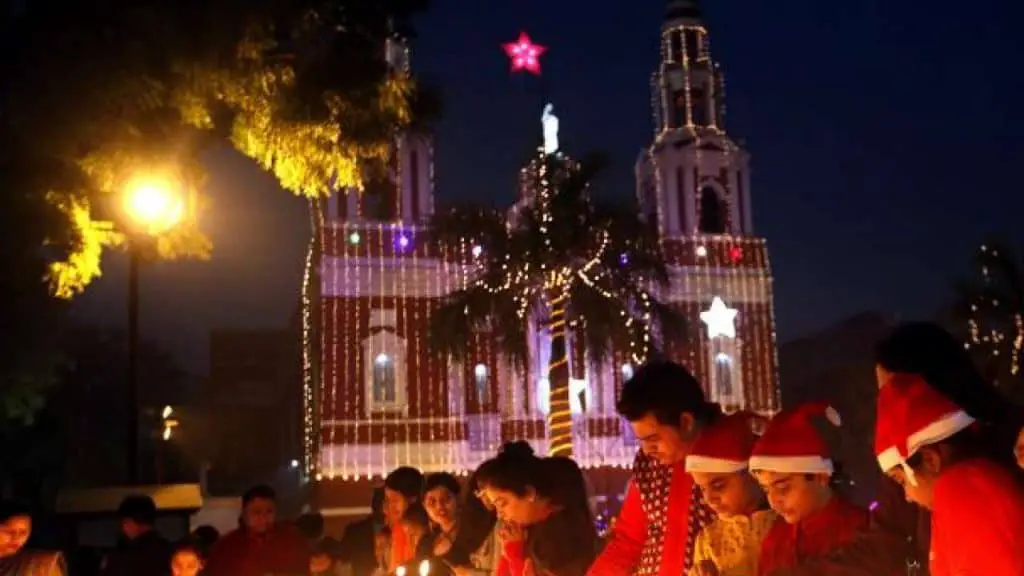Xmas Celebrations in Venezuela
Christmas celebrations in Venezuela are vibrant, festive, and deeply rooted in traditions that blend indigenous, European, and African influences. Here are some key aspects of Xmas celebrations in Venezuela:
- Nine Days of Dawn (Novena):
- One of the most cherished traditions in Venezuela is the “Nine Days of Dawn” or “La Novena.” This series of nightly celebrations and prayers from December 16th to December 24th. Families and communities come together to sing Christmas carols, pray, and share traditional foods.
- Aguinaldos and Parrandas:
- “Aguinaldos” are traditional Venezuelan Christmas songs sung during the holiday season. People form groups to go caroling, and this tradition is known as “parrandas.” Parrandas involve surprise visits to friends and family, spreading joy through music, dance, and festive gatherings.
- Christmas Eve Celebration (Nochebuena):
- Christmas Eve, or “Nochebuena,” is a central moment in Venezuelan Christmas celebrations. Families come together for a festive dinner that includes traditional dishes such as hallacas (a type of tamale), pan de jamón (ham bread), and dulce de lechoza (papaya dessert). At midnight, there is a mass called “Misa de Gallo” or “Rooster’s Mass” to celebrate the birth of Jesus.
- Fireworks and Firecrackers:
- Venezuelans celebrate Christmas with vibrant displays of fireworks and firecrackers. The sky is illuminated with colorful explosions, adding to the festive atmosphere.
- Navidad in the Plaza:
- Many towns and cities in Venezuela host festive events in the main plazas during Christmas. These events feature music, dance performances, and other cultural activities that unite the community.
- Dancing and Music:
- Music and dance are integral parts of Venezuelan Christmas celebrations. Traditional music genres such as gaita and aguinaldo are popular during this time. People gather to dance, and streets come alive with the sounds of drums, maracas, and other traditional instruments.
- Nativity Scenes (Pesebres):
- Nativity scenes, known as “pesebres,” are commonly displayed in homes and public places. These scenes depict the birth of Jesus and include figurines representing not only the Holy Family but also local characters and traditions.
- Epiphany Celebration (Día de Reyes):
- The Christmas season in Venezuela extends to the celebration of Epiphany, known as “Día de Reyes” or Three Kings’ Day, on January 6th. This day commemorates the arrival of the Wise Men bearing gifts for the baby Jesus. Families exchange gifts and enjoy festive meals on this day.
In Venezuela, Christmas is a time of joy, family, and community spirit, with traditions that reflect the country’s cultural diversity and rich heritage. Combining religious customs, festive music, delicious cuisine, and lively gatherings creates a unique and memorable Christmas experience.
Midnight Mass in Venezuela
Misas de Aguinaldo, the midnight mass is one popular event amongst the other church sessions conducted some days before Christmas.
Besides, roller-skating is one activity the people of Venezuela’s capital-Caracas continue to uphold. During the last week of Christmas, they will skate to the daybreak church services.
It is a tradition that by 8 a.m., roads are traffic-jammed for people to skate safely and comfortably to their various churches.

During this moment, people enjoy traditional music carols, led by singers known as ‘Gaiteros.’ A particular carol-like music style known as ‘aguinaldos y parrandas,’ plays often.
Also, the Christmas folks in Venezuela are known as ‘Gaita music.’ This folklore that originated from the Zulia state plays on various musical instruments such as:
- Tambora – the Venezuelan drum
- Cuatro – a unique four-stringed guitar
- Charrasca – a form of ridged cylinder played by rubbing a stick downwards and upwards rhythmically
- Furro – the drum type containing a stick fixed up to the center of the drum skin
Food Festivities
Food festivities mark the climax of the season. Christmas is when Venezuelans come together and enjoy various traditional meals.
The food varieties include:
- Pan de Jamon – a puffed-up, swiss-roll bread pastry mixed with olives, raisins, ham, and bacon
- Hallacas – a combination of chicken, pork, beef, raisins, capers, and olives, covered with plantain leaves and maize. It is then string-tied, after which they steam or boil
- Pork leg (Pernil) – mixed with chicken salad
Besides other celebrated events in Venezuela include:
- The day of Santa Barbara – 4th December
- The day of the Three Kings (referred to as Epiphany or ‘El Dia de Los Reyes Magos ‘- 6th January.
Learn More With the Help of Video
Main Points About Christmas in Venezuela
- In Venezuela, Christmas is celebrated during the winter solstice when it’s warm and rainy. Venezuela doesn’t get snow.
- Major Christmas traditions include attending midnight mass on Christmas Eve called ‘Misa de Aguinaldo’, feasting, and partying until sunrise on Christmas morning.
- Typical Christmas dishes include hallacas (cornmeal stuffed with beef, pork, chicken, raisins, capers, and olives wrapped in plantain leaves), pan de jamón (ham bread), and pernil/lechón asado (roast pork leg).
- The Christmas season starts on December 16th with the beginning of Las Misas de Aguinaldo and ends on January 6th, Three Kings Day or the Feast of the Epiphany.
- Popular Christmas decorations are nativity scenes or Pesebres depicting the nativity of Jesus. Poinsettias, parang flowers, and yellow buttercups decorate homes.
- There isn’t a Santa Claus figure. Instead, Venezuelan children receive gifts from Baby Jesus or Niño Jesús on Christmas morning by their bedsides or under the tree.
Word Cloud for Christmas in Venezuela
The following is a collection of the most used terms in this article on Christmas in Venezuela. This should help you recall related terms as used in this article at a later stage.




